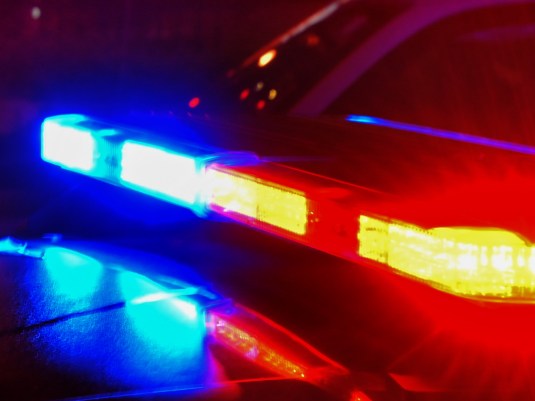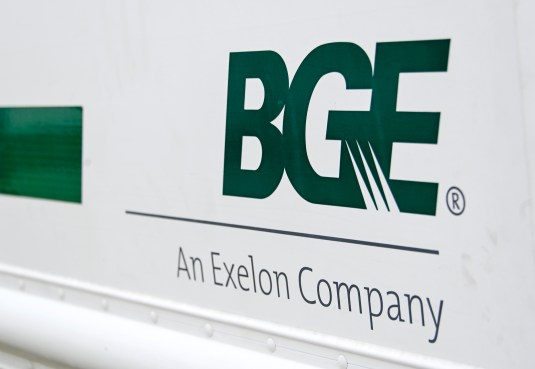
The ship that launched multiple federal inquiries and knocked down an iconic Baltimore structure has left town.
Three months after it crashed into the Francis Scott Key Bridge and sent the span tumbling into the Patapsco River, the 984-foot Dali container ship began slowly sailing under its own power — assisted by four tugboats — just before 8:30 a.m. Monday to Norfolk, Virginia. After a 23-hour trip without any issues, the ship tied up at roughly 7:30 a.m. Tuesday, according to Darrell Wilson, spokesperson for Synergy Marine Group, the Dali’s operator. In Norfolk, the vessel will unload all of its containers and receive more extensive repairs.
With crushed containers still resting on the bow and a tarp covering a hole in the hull, the ship left the Port of Baltimore’s Seagirt Marine Terminal and then turned right to follow the federal shipping channel Monday morning. Marine tracking data indicated the ship traveled at roughly 9 knots (10 mph) for the bulk of its transit Monday.
Traffic on the Chesapeake Bay Bridge near Annapolis was halted for roughly 20 minutes at 11 a.m., as the ship approached the bridge. To avoid distracting drivers, the Maryland Transportation Authority sometimes stops traffic on the bridge when vessels of high public interest sail underneath.
About 100 people gathered at Sandy Point State Park, in the shadow of the Bay Bridge, to spectate as the damaged Dali — still carrying fragments of Key Bridge — safely sailed beneath the span that links Central Maryland to the Eastern Shore. The crowd, some of whom peered through binoculars, fell so silent as the ship approached that birds could be heard chirping. As the Dali safely transited the bridge, observers called out: “Threading the needle” and “Through the goal posts.”
“Did you notice how quiet everyone was?” said Paula Schnabel, of St. Margaret’s. “It was almost solemn.”
The Dali had been in Baltimore since it lost power in the early hours of March 26, colliding with a Key Bridge pier and collapsing the structure, killing six construction workers. Debris from the disaster blocked Baltimore’s shipping channel for more than two months, and the bridge’s demise eliminated one of only three harbor crossings, slowing car and truck traffic in the area.

The National Transportation Safety Board and the FBI are both investigating the calamity. As the Dali sailed Monday, the NTSB released a rare update to its investigation, noting that it is focusing on a small electrical component of a circuit that connects two wires, known as a “terminal block.” The NTSB took the component to a lab for further testing, it said in a statement, also noting it had completed interviews with the 21 crew members aboard the ship at the time of the incident.
Prompted by the collapse, the Coast Guard has also initiated a board of inquiry to evaluate potential risks to other bridges in the U.S.
Last month, crews used explosives to cut up a piece of the Key Bridge that sat atop the Dali, then refloated the vessel. Five tugboats moved the ship to the Seagirt Marine Terminal, where some of the wreckage on its crumpled bow was removed. Some of that debris remained on the vessel as it transited Monday, however, and several workers could be seen standing on the bow as the vessel began its voyage. The ship will undergo further cleanup and repairs in Norfolk.
Containers remained on the Dali in Baltimore to weigh the ship down so it fit under the Bay Bridge, which has about 185 feet of vertical clearance.
The Coast Guard enforced a 500-yard safety zone around the Dali during its voyage, and there is also a 100-yard safety zone while the ship is moored near Norfolk to protect from “potential hazards created by the heavily damaged M/V Dali while it offloads cargo,” according to a Coast Guard memo.
The Dali leaves Baltimore for first time since Key Bridge collapse | PHOTOS
A few people gathered at Fort Armistead Park earlier in the day to watch the ship’s departure from the Port of Baltimore, including George M. Treas III, who lives nearby. He likened the bridge collapse to “losing somebody” and said visiting the area is “like going to a graveyard.”
As Treas watched the ship slowly depart, he said: “It feels good. I feel safer now. They caused enough havoc here.”
Bob and Karen Merrey had to tend to some business on the other side of the Bay Bridge from their home on Kent Island, and they left early Monday to avoid the span’s closure.
They had been scheduled to take Royal Caribbean’s Vision of the Seas cruise out of Baltimore on April 4, but with the port closed at the time, they themselves had to travel to Norfolk to board. Retirees from the Towson area with a son who lives near the Key Bridge, the couple had driven across that span the day before the catastrophe.
They quietly watched Monday from Sandy Point State Park as the Dali passed before them and beneath the Bay Bridge.
“I still,” Bob said, “get goosebumps.”
Baltimore Sun reporter Alex Mann contributed to this article.



